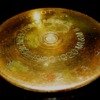Some bits of information from several issues of
The Field Artillery Journal, United States Field Artillery Association.
The Field Artillery Journal, Vol. 9 No.3, July – August, 1919
http://sill-www.army.mil/firesbulletin/archives/1919/JUL_AUG_1919/JUL_AUG_1919_FULL_EDITION.pdf
Starting on page 289 is a report by a Board of Officers entitled
Study of the Armament and Types of Artillery Matriel to be Assigned to a Field Army, December 11, 1918. The report calls for overhauling or developing new artillery pieces for all calibers of guns in use at the time, new types of ammunition & fuzes and new types of gun transportation (wheeled or mechanized). Basically an extensive wish list to “modernize” all aspects of artillery for the U.S. Army. For the 75mm gun the Board, in general terms, stressed a split-trail carriage, better traverse, 15 lb. projectile etc.
The Field Artillery Journal, Vol. 10 No.6, November – December, 1920
http://sill-www.army.mil/firesbulletin/archives/1920/NOV_DEC_1920/NOV_DEC_1920_FULL_EDITION.pdf
Starting on page 641 (CURRENT FIELD ARTILLERY NOTES, Ordnance Notes II) there is a mixed discussion on the “new” 75mm and 105mm guns. Included is a photo entitled “
WOODEN MODEL OF 75 MM. GUN ON SPLIT TRAIL CARRIAGE”. See
photo #1 below
The Field Artillery Journal, Vol. 11 No.1, January – February, 1921
http://sill-www.army.mil/firesbulletin/archives/1921/JAN_FEB_1921/JAN_FEB_1921_FULL_EDITION.pdf
There are 2 photos located between pages 74 and 75. The first photo (
photo #2 below) is described as follows:
75-MM. GUN, MODEL 1920, ON CARRIAGE NO. 1, MODEL 1920. Above: Carriage unlimbered, traversing lock engaged. Below: Right side view; firing position 0 degrees elevation.
The second photo shown (
photo #3 below) has the following description:
75-MM. GUN, MODEL 1920, ON CARRIAGE NO. 1, MODEL 1920. Rear view 80 degrees elevation; 0 degrees traverse.
Based on the the photo descriptions is it safe to assume that for the case headstamp shown in the beginning post above, that portion of the HS reading
GUN MOD. 1920. 1920 MI & MII identifies the case as being for the 75mm Gun Model 1920 mounted on either carriage No. 1 (type MI) , Model 1920 or carriage No. 2 (type MII), Model 1920?
Maybe carriage No.1 was the wheeled mount and maybe carriage No. 2 was a mechanized mount?
Brian















